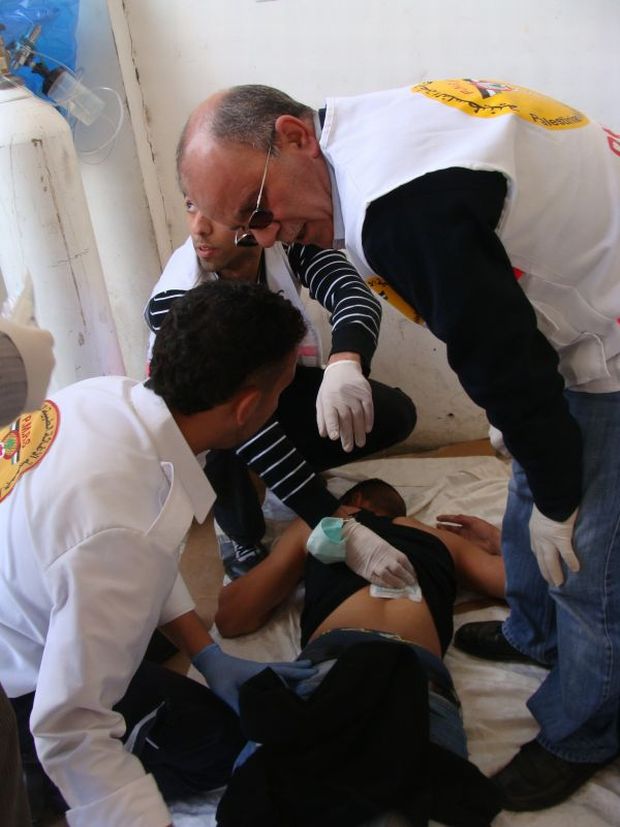Some 1,000 Palestinians and internationals gathered outside the Qalandia checkpoint today to mark Land Day and to protest Israeli occupation, continued settlement of Palestinian land, and restrictions on freedom of movement.
Israeli forces used rubber-coated bullets, tear gas, skunk water, and “the scream” acoustic weapon against demonstrators. Some Palestinian youth burned tires and threw stones.
Israeli forces left the checkpoint area and entered Qalandia, effectively pushing protesters further back from the checkpoint.
Speaking to +972, Dr. Zaid Atabeh of the Palestinian Authority-affiliated Military Medical Services said that 85 protesters had been injured, 12 of whom were hospitalized. All of the injuries were from tear gas and rubber bullets.
Palestinian politician and activist Mustafa Barghouti was reportedly among those injured and hospitalized; some Palestinians say he was struck in the head by a tear gas canister, while Israeli officials claimed he was injured in a fight that broke out between protesters. At least one Palestinian eyewitness backed the Israeli account.
A Palestinian protester who goes by his Twitter handle @JalalAK_jojo explained to +972, “The Mubadara guys [Palestinian National Initiative, Mustafa Barghouti’s party] just went ahead before everyone else and the Fatah and other organizers inside [Qalandia refugee] camp were angry that someone is trying to pull this as a media stunt. So, basically, Mustafa Barghouti and his supporters were beaten up by the other organizers inside the camp…”
He added that he felt that the chaotic demonstration was not successful.
Other Palestinians expressed frustration about the lack of organization and leadership of the protest as well as squabbling between factions. When asked if the chaotic scene was a microcosm of Palestinian politics, Palestinian activist Diana Alzeer answered, “Definitely… it looks like the whole of Palestinian politics and how it works. ”
“We don’t know who is organizing and if you just look around you, with all the flags that are being spread from all factions, it just tells you that they’re just competing amongst each other,” Alzeer continued.
She added that, when she first arrived, she was excited to see a crowd larger than she’d seen at past protests at Qalandia. “But it’s such a weak protest – everybody is just standing around, watching, and people are not trying to march.”
Alzeer continued, “On top of that, you see [the Palestinian cellular company] Jawwal is advertising itself right now. It’s using people.”
Jawwal’s booth and the company representatives handing out free hats and bottles of water lent the scene an odd, festival-like feeling, especially when one considers the gravity of the day.
Land Day marks the strikes and protests that were held in Israel in 1976 after the state appropriated thousands of dunams of privately-owned Palestinian land. Six Palestinian citizens of the state were killed by Israeli security forces during the 1976 demonstrations, a watershed moment in the Palestinian national struggle and in the crystallization of a Palestinian political and national identity. Protests commemorating the day were held Friday all over Israel and the Palestinian territories.
While Qalandia is within the Israeli-dictated municipal boundaries of Jerusalem, and inhabitants are Jerusalem residents who pay taxes to Israel authorities, it is cut off from the rest of the city by the separation wall and a massive checkpoint. Many who live in Qalandia must pass through the checkpoint on a daily basis to reach their jobs and schools on the other side. Like other areas of East Jerusalem, Qalandia receives inadequate services from the Jerusalem municipality.


